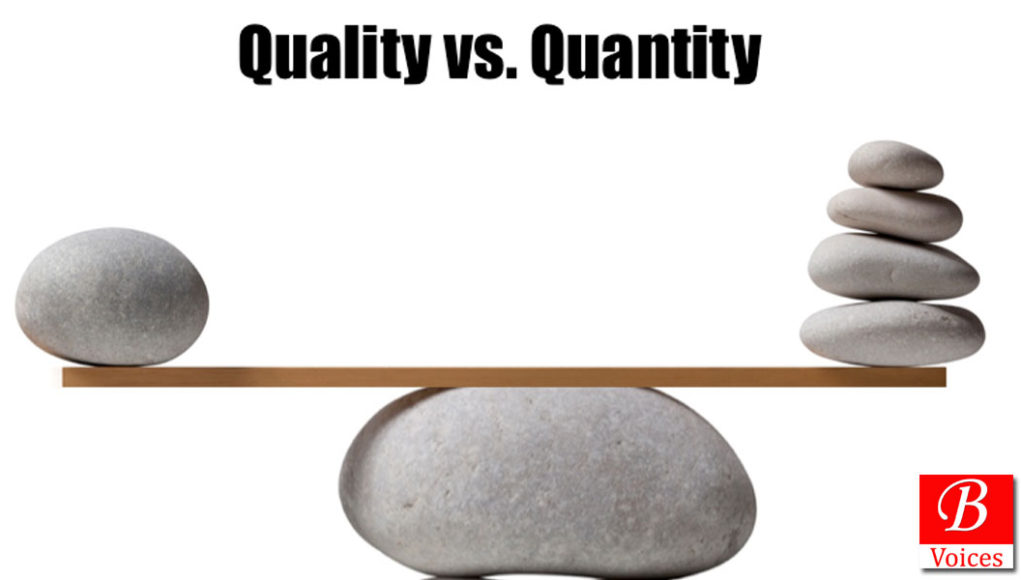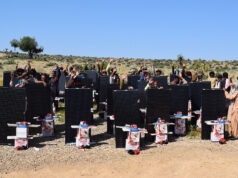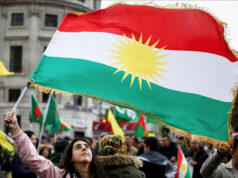Dervaish Ali
“…God citeth symbols for men to remember.” (Qur’an, 14:24-25)
There was a time when people in traditional societies said so less and meant so much. It was a time when things did not even have proper names, yet they were rich with purpose and overflowing with meaning. Now, men and women say so much, chatter non-stop—both online and offline— and all that they say mean so little, if anything at all! Everything now has explicit names, elaborate definitions, colorful labels and explanations, but lack meaning and purpose.
People did good acts without running around like some wound-up robot advertising their noble acts, shamelessly indulging in self-promotion and self-marketing. Virtues like charity were more practiced than displayed, praised or talked about: a kind act was just done, always for Allah’s sake, and then forgotten by the benefactor, or “thrown away into the river” (neki karr, darya mein phenk). When it came to virtuous acts like helping the poor and the needy, such was the quality of character of the high and the low, the khawas as well as the awam, that the left hand was not supposed to know what the right hand was doing or had done, whom it had helped or had provided succor. Others’ faults and weaknesses were rarely discussed or criticized in public: disagreement, disapproval and reprimand were often subtle and indirect. Compare that to what literate and educated people do on Facebook and Twitter nowadays!
The time was when people, ordinary as well as the elite, serf as well as the lord, had eyes and intelligences that could see the “picture that is not in the colors”. People who could neither read nor write—the illiterate or what we moderns slightingly refer to as “ignorant” (jahil and ganwaar)— but who were often profound possessors and practitioners of wisdom. Yes, they were illiterate as measured against today’s criteria of literacy and education, but they could tell month-long stories of wisdom and recite epic poems from heart. There was self-effacement and humility. People were certain more about what they did not know, their ignorance, than about what they could claim as knowledge. And when they did make such claims, they would often complement them with Wallahu Alam (God knows best).
Now, we, the (post-) modern “chattering shadows of shadows” as the late poet Kathleen Raine once put it, don’t even see the colors in vividly painted pictures, let alone recite long poems or tell interesting stories. We are the “information rich” and knowledgeable people, over-confident about all and everything under the sky, and never failing to look down upon the people and the ways of the past. We have, we cheerily tell ourselves and each other, “progressed’ and “evolved”; we are more “advanced” and “developed” than our predecessors. But, in fact, we are the overly literate and educated holograms, unreal and empty images constantly gossiping and telling inane tales that are often ‘full of sound and fury, signifying nothing’!
One reason for this state of affairs is the loss of symbolism in our languages which is itself a reflection of our dull, simplistic thought patterns. Whatever else they were or were not, traditional languages were always symbolic. Symbolic language meant that its users were aware of and in communication with something higher than themselves, since the main function of a symbol is to connect the lower to the higher. A traditional/religious symbol helps us climb up the ladder of meaning, of purpose; it helps us transcend the mundane and the trivial, this going-beyond being the main purpose, the raison d’etre, of life in traditional cultures. Symbols are like memory pills in that they remind man (insaan) of what he has forgotten (his ghaflah, and this ghaflah being a major failing of a Muslim). Those forgotten things are the real things amidst whose reflections or shadows we live out our lives in this world, somewhat like the cave dwellers in the allegory of Plato. Symbols are like keys that help us open doors to divine mysteries that otherwise remain locked and inaccessible. Important to remember is that in the world of symbolism, height also means depth: one who climbs high above is also one who is going deep within to know his “self” or khud / khudi.
Education is also to be blamed. Modern education, to be precise. We just have too much data and information, we know too much but, paradoxically, remain unenlightened and unhappy as most of our social, economic and especially ecological indicators reveal. Or, we know a lot about things that don’t matter—the trivial and the accidental, always in search of answers for the how questions— but almost nothing about what is essential, the why questions. Our instrumental reason, the reductionist rationality, while efficient, practical and useful in the abundant production of material products, nevertheless, destroys something deeper and qualitative that can be termed wisdom or hikma in Islamic languages and societies. This system of teaching-learning is so crudely quantitative that only what we can see, measure, control and predict is what exists for us. It teaches us to see everything with one-eye only. It is like casting a fish net in the sea and what the net brings up to the surface is all that exists. Everything else that passes through the net is non-existence for us. Moreover, an education that is obsessed with practicality, is exclusively oriented towards the achievement of the quantitative and celebrates materialism and consumerism without any regard for non-material or spiritual values (iqdaar) “makes man a more clever devil” as C.S. Lewis once remarked.
Waleed El-Ansary has argued that Muslims used to teach numbers symbolically to children, somewhat like this: One (1) means God/Allah, two (2) means man and woman, wife and husband, father and mother, night and day, three (3) means you, mother and father, or, God, The Holy Book and The Prophet (pbuh), four (4) means…and so on. We have come a long way from those times, the “dark and primitive ages”. We have become enlightened, progressed and developed ourselves to (symbolic) death! We have turned every form of quality to quantity. No symbolism. Just, sheer quantity. We no longer aspire to climb up, but are happy to dwell in dark basements of our being (wujud), our ego. Kids now learn their arithmetic as follows: One (1) means me, and only me, means 1 big house, 1 big car…, two (2) means 2 mansions, 2 iPads or 2 million Rupees or Dollars…, three (3) means three pairs of Nike sneakers… and so on. In the “Christian” west, this loss of symbolism can be clearly seen in the reduction and quantification of an essentially symbolic and qualitative event, Christmas, which is now reduced to crass forms of consumerism. Our own Eid, Eid al Fitr and Eid al Azha, for example, also seem to be following that trend. I will end this blog post with this lament of T.S Eliot from his poem The Rock:
All our knowledge brings us nearer to our ignorance,
All our ignorance brings us nearer to death,
But nearness to death no nearer to GOD.
Where is the Life we have lost in living?
Where is the wisdom we have lost in knowledge?
Where is the knowledge we have lost in information?
The cycles of Heaven in twenty centuries,
Bring us farther from GOD and nearer to the Dust.
(From T.S. Eliot, The Rock)
Disclaimer: Views expressed in this article are those of the author and Balochistan Voices not necessarily agrees with them.
Share your comments!









